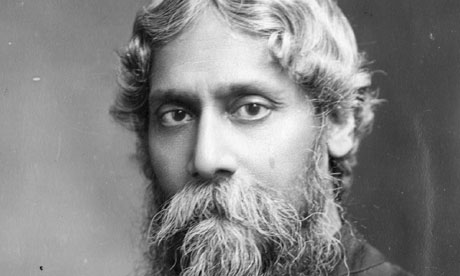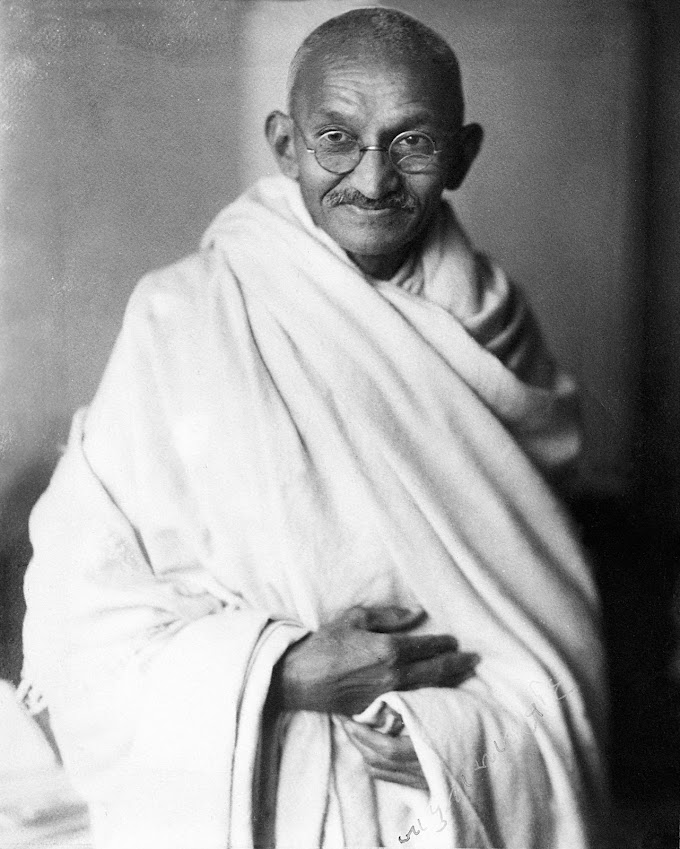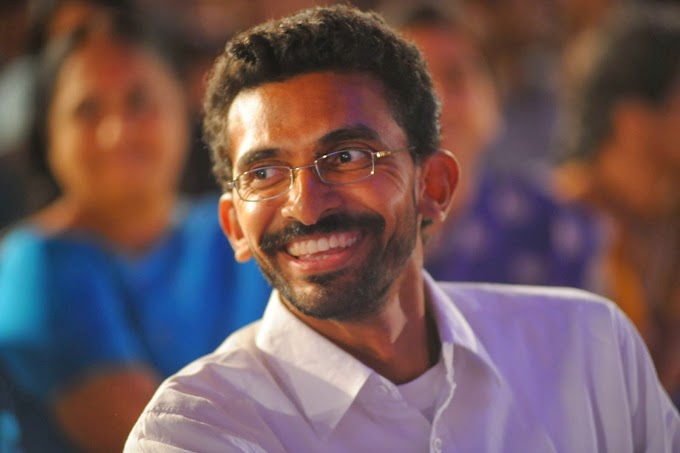INDIAN POLITICIAN (BJP) LAL KRISHNA ADVANI (L.K.ADVANI) BLOG POST ABOUT HIS CHILDHOOD
I was born in Karachi on 8 November 1927. My family comprised my parents Kishinchand Advani and Gyanidevi Advani and my younger sister, Sheela Advani. Our house, in a locality called Jamshed Quarters, was built soon after my birth; and so was named ‘Lal Cottage’. It was a fairly spacious, beautifully designed, single-storied bungalow. We had a horse-driven Victoria at home. To outsiders, it may have seemed a status symbol; to me it was a source of curiosity during my early childhood. But curiosity, as they say, ‘kills the cat’, and one day I found myself under one wheel of the Victoria. The wound on my thigh took several days to heal.
There were many Parsi families in a part of Jamshed Quarters known as Parsi Colony and most of them lived in mansions, they being a prosperous community. The old-world charm of these mansions, which is sadly at odds with the rapidly shrinking population of the Parsis, can still be seen in Karachi—and also in Bombay, a city with which Karachi shares close historical ties and many common characteristics. The Advani family belonged to the Amil branch of Sindhi Hindus. Traditionally, the Amil was a revenue official who assisted munshis in the administrative set-up of Muslim kings. It was one of the two main divisions of the Lohano clan which was linked to the Vaishya (business) community. In time, Amils came to dominate government jobs and professions in Sindh. Generally speaking, Hindus in Sindh had a strong tradition of revering the Guru Granth Sahib, the sacred scripture of the Sikhs, Guru Nanak and other Sikh gurus.
INDIAN POLITICIAN (BJP) LAL KRISHNA ADVANI (L.K.ADVANI) RARE CHILDHOOD PHOTOS (INDIAN POLITICIANS CHILDHOOD PHOTOS)
.jpg) |
| Indian Politician (BJP) Lal Krishna Advani (L.K.Advani) Rare Childhood Pic with Parents Father Kishinchand Advani (Dad), Mother Gyanidevi Advani (Mom) & Younger Sister Sheela Advani - Family Pic |
.jpg) |
| Indian Politician (BJP) Lal Krishna Advani (L.K.Advani) Rare Childhood Pic with Younger Sister Sheela Advani |
.jpg) |
| Indian Politician (BJP) Lal Krishna Advani (L.K.Advani) Rare Childhood Pic |
.jpg) |
| Indian Politician (BJP) Lal Krishna Advani (L.K.Advani) Rare Childhood Pic with Parents Father Kishinchand Advani (Dad) & Mother Gyanidevi Advani (Mom) |
.jpg) |
| Indian Politician (BJP) Lal Krishna Advani (L.K.Advani) (First from Left of First Row) Rare Childhood Pic Of The School Cricket Team |
.jpg) |
| Indian Politician (BJP) Lal Krishna Advani (L.K.Advani) Rare Childhood Pic |
My paternal grandfather, Dharamdas Khubchand Advani, was a Sanskrit scholar well settled in life as the principal of a government high school. He passed away before I was born. My father, had four brothers, three elder to him and one younger. The elder three—Gobindram, Parasram and Ramchand—were in Hyderabad, while my father and his younger brother Gopaldas lived in Karachi. Gobindram, a civil servant, retired as Deputy Collector of Hyderabad. Parasram was a lawyer. Ramchand and my father were businessmen, and Gopaldas was a professor of chemistry in D.J. Sindh College, Karachi. As I have mentioned, three of my uncles have the names Gobindram, Ramchand and Gopaldas. By a curious coincidence three of my mamas (maternal uncles) also had those very names! Karachi and Hyderabad together had a population of approximately six lakhs, mainly Hindus. But with the Amil community confined mainly to these two places, families were quite closely knit. During those days nuclear families were unheard of; large, extended families were the norm. So, when I look back and identify the numerous first cousins I grew up with, I can count as many as thirty-four!
The most vivid memory of my early childhood is the affection I received from everyone in the family, including my grandparents and my three mausis (mother’s sisters). We received a lot of intense love and care as our mother had passed away when I was just thirteen, and Sheela only seven. Indeed, Sheela, who now lives in Mumbai, was brought up almost entirely by our Jamni Mausi and Mausa Chandiram Wadhwani.
I have very fond memories of my childhood. Even the trauma of Partition, which forced our family, like lakhs of other Hindu and Sikh families in Sindh, to migrate to this part of undivided India, has not erased those memories. On the contrary, these memories have become all the more precious because of my family’s forced separation from our homeland, in which I spent the first twenty years of my life.
The one person who had the greatest influence on my personality in my childhood years was my father. He was a gentle human being who embodied simplicity, and without any overt preaching, he quietly shaped my mind with his impeccable conduct. I was extremely attached to my mother as well, but after she passed away it was from my father that I received both love and guidance.
THE ATMOSPHERE OF PAVITRATA AT HOME
As I look back, what strikes me most about the atmosphere in our household was the pervasive air of pavitrata (piousness and purity). Most Hindus in those days were Nanakpanthis—followers of Guru Nanak, the founder of Sikhism. Indeed, the main ‘deity’ in our home was the Granth Sahib. We would not only pray to it, but my grandmother also used to read from it everyday, in the presence of all the family members.
Sikh ritualism was part of the family’s tradition, and the Granth Sahib was duly venerated and recited regularly not just by my grandmother, but also by my mother and elders. No wonder, even as a child, my awareness about my own birthday was not simply that I was born on 8 November 1927, but that it was just a day after Guru Nanak Jayanti, which falls on Kartik Poornima (the night of the full moon as per the Hindu calendar in the month of Kartik). I also recall that on my birthday there used to be an akhand paath (full and continuous reading from the Granth Sahib), followed by bhog (consecrated meal).
I vividly recalled the precious tradition of religious harmony in Sindh. Temples and gurdwaras were both accepted as abodes of God and all Hindus went there to offer prayers. Hindus would join the celebrations of Nanak Jayanti and Guru Gobind Singh Jayanti at gurdwaras, where Diwali and Dusshera festivities were also held. I was completely unaware that those who wore beards and those who did not, belonged to different faiths. In fact, as far as Hindus and Sikhs are concerned, it is only after migrating to this part of India after Partition that, for the first time, I began to hear and understand that the two are different communities. It was also common for Hindus to pay homage at the shrines of Sufi saints and for Muslims to celebrate Hindu festivals. These are the pluralist samskaras (traditions) which were passed on to me as a child and have shaped my personal ethics since.
My schooling in Karachi was at St. Patrick’s High School for Boys, which was the biggest, and also the most highly rated school in the city. I studied there for six years from 1936-42. It was founded in 1845 by Catholic missionaries from Ireland, initially to cater to the Goan Christian community in the city. To the right of our school was the magnificent St. Patrick’s Church (now Cathedral), which had a commanding view from across the length and breadth of Clarke Street. To its left was St. Joseph’s Convent School for Girls. My school’s reputation, the loving and nurturing by its teachers, its architectural beauty and its quiet environs—all these made me feel proud to belong to St. Patrick’s.
As far as I can remember, I stood first in every class till my matriculation. Thus, all the teachers knew me. I also happened to be the youngest in my class.
In school, we had an option to learn a second language. Many students opted for French, some took Persian, but I chose Latin. I remember scoring very high marks in the board exam in Latin. My one big regret in life, however, has been that I did not learn Sanskrit in school. It was not commonly taught in schools and, being a Catholic institution, St. Patrick’s did not offer Sanskrit at all.
It may surprise many readers to know that I was not very eloquent in Hindi while I was in Karachi. I used to understand it somewhat because of the Hindi movies I watched and could even manage some broken conversation. I started reading, writing and conversing in Hindi only after migrating to India in 1947, when I was already twenty years old.
MY LOVE FOR CINEMA, CRICKET AND BOOKS
Of my four maternal uncles, Sundar Mama, the youngest, became a good companion even though he was much older to me. We used to frequently watch films together and he was one of the main reasons for my early interest in them, both Hindi and English.
I discovered during my college years that I was more inclined towards English literature. By the time I joined Dayaram Gidumal National College in Hyderabad in 1942, the Quit India Movement had begun in right earnest. Due to the disturbed conditions in the city, the college rarely functioned smoothly and most students would just wander around. I spent most of my time in the college library, voraciously reading every book that caught my fancy. It is here that my lifelong love for books began.
AT FOURTEEN, A SWAYAMSEVAK OF THE RSS
There is always one moment in childhood, it is said, ‘when the door opens and lets the future in’. In my case, that moment of stepping into the future came, unexpectedly at a playful moment, when I joined the RSS.
I was only fourteen years and a few months old then. After I completed my matriculation, my father shifted base from Karachi to Hyderabad in Sindh. During my vacation and before joining college, I started playing tennis. One of my regular partners on the tennis court was a friend, Murli Mukhi. One day, right in the middle of the game, he said, ‘I am going.’ Utterly surprised, I asked him, ‘How can you go like this, without even completing the set?’ He replied, ‘I have joined the RSS a few days ago. I cannot be late for the shakha because punctuality is very important in that organisation.’
This was my introduction to the term ‘RSS’. I probed him a bit further and he said I could go along with him. I declined, saying that I wanted to continue with the game and would go some other day. That moment came soon enough. After a couple of days, I accompanied him to a shakha. In those days, as martial law had been imposed in Sindh, public drills were banned. So my first visit to a shakha was conducted on the terrace of a large bungalow belonging to Ram Kripalani, a prominent member of the shakha ended with swayamsevaks standing at attention to sing the Sangh prayer for our Motherland—‘Namaste Sada Vatsale Matrubhoome…’ From that day till now, for sixty-fi ve long years, I have remained a devoted, committed and proud swayamsevak of the Sangh.
I should explain here what motivated me to join the RSS. As long as I was in school, my universe was limited to my home and studies. In school, I absorbed all the knowledge that I received from my teachers and books, while at home the love, affection and samskaras that I received from my family also shaped my personality. This was the capital I accumulated in my childhood. However, I knew little about the goings-on in the world, beyond the walls of my home and school. My introduction to the momentous political developments taking place in India and the world, at that time, was only after I started attending the RSS shakha. One day, as I, along with the other volunteers, sat listening to the bauddhik (intellectual talk) by one Shyam Das, he posed us a question: ‘You receive so much from society, but what are you giving back? Isn’t it your duty to do so? India is now under foreign rule. Isn’t it our responsibility to liberate our Motherland?’ His words gently opened a new door within my inner self and set me on a path of self-enquiry.
MY EARLY PATRIOTIC INFLUENCES
Attending the shakha and discussing national and international issues with my seniors had another immediate effect on me: it imparted a new edge, urgency and purpose to my love of books. I started reading all the available literature on Indian history, especially the history of great patriotic warriors like Shivaji, Rana Pratap and Guru Gobind Singh. Once I read five books, at a stretch, on Shivaji, including The Grand Rebel by Dennis Kincaid, a renowned British historian.
I also read Aurangzeb and Shivaji by Jadunath Sarkar, a great historian from Bengal, whose books traced the fall of the Mughal Empire and the resurgence of national consciousness under the Maratha ruler.
In 1943, a year after I joined the RSS, I came to Indore to do my first year Officers’ Training Camp (OTC). On my way back, I took a detour to spend a few days travelling in Rajasthan. Ever since I had read Colonel James Tod’s two-volume classic Annals and Antiquities of Rajasthan, written in the early nineteenth century, I had developed a fascination for this land of heroes and martyrs.
For a RSS swayamsevak to be given any responsible position in the organisation, he has to undergo training for the OTC. The training is complete when the swayamsevak undergoes the third year OTC in Nagpur, the RSS headquarters, which I underwent in 1946. In between I had done my second year OTC in Ahmedabad. Thus began my association with Gujarat, which continues even today.
When I was seventeen, I took up the first professional ‘job’ of my life—as a teacher at the Model High School in Karachi. I taught English, history, maths and science to class five and six students. In those days, it was not necessary to have a diploma or bachelor’s degree in education to become a teacher. Since I was quite young, many of my students were nearly my age. My association with the RSS motivated me to become a teacher. The Sangh had taught me that students should internalise the ideals of patriotism, develop good character, enrich their knowledge base and acquire a natural readiness to serve society. As a swayamsevak, I desired that more and more youngsters should join the shakha and receive the samskaras of the Sangh. I thought that a teacher’s profession was best suited to achieve both ends.
.jpg)

.jpg)

![Dr.S.Jaishankar (Subrahmanyam Jaishankar) [Minister of External Affairs (Foreign Minister) of India] Family Photos | Real-Life Photos](https://blogger.googleusercontent.com/img/b/R29vZ2xl/AVvXsEgRkqtS6gzYw8q_pwf-q0QnrzgP7zskfYRml0i0LC2gHUN6IG9VNKQoUDkyCfCxY7xpeGwgAtTnTFImXDVKdx8BfnUMQhkM_WoRufvwiYqDKJHUx9LJdhK1r9kyu3bLSUoJWI6wv4nyLjhZE77gviS-nNHU1_rOrh7DLr4CLNfSB0mD05KLTh2NmD_8Gw/w680/Dr-S-Jaishankar-Subrahmanyam-Minister-External-Affairs-Foreign-India-Family-Real-Life-Photos%20(1).jpg)

.jpg)
.png)
0 Comments